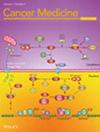Development and Validation of an MRI-Based Radiomics Nomogram to Predict the Prognosis of De Novo Oligometastatic Prostate Cancer Patients
Abstract
Objective
We aimed to develop and validate a nomogram based on MRI radiomics to predict overall survival (OS) for patients with de novo oligometastatic prostate cancer (PCa).
Methods
A total of 165 patients with de novo oligometastatic PCa were included in the study (training cohort, n = 115; validating cohort, n = 50). Among them, MRI scans were conducted and T2-weighted imaging (T2WI) and apparent diffusion coefficient (ADC) sequences were collected for radiomics features along with their clinicopathological features. Radiological features were extracted from T2WI and ADC sequences for prostate tumors. Univariate Cox regression analysis and the least absolute shrinkage and selection operator (LASSO) combined with 10-fold cross-validation were used to select the optimal features on each sequence. Then, a weighted radiomics score (Rad-score) was generated and independent risk factors were obtained from univariate and multivariate Cox regressions to build the nomogram. Model performance was assessed using receiver operating characteristic (ROC) curves, calibration, and decision curve analysis (DCA).
Results
Eastern Cooperative Oncology Group (ECOG) score, absolute neutrophil count (ANC) and Rad-score were included in the nomogram as independent risk factors for OS in de novo oligometastatic PCa patients. We found that the areas under the curves (AUCs) in the training cohort were 0.734, 0.851, and 0.773 for predicting OS at 1, 2, and 3 years, respectively. In the validating cohort, the AUCs were 0.703, 0.799, and 0.833 for predicting OS at 1, 2, and 3 years, respectively. Furthermore, the clinical relevance of the predictive nomogram was confirmed through the analysis of DCA and calibration curve analysis.
Conclusion
The MRI-based nomogram incorporating Rad-score and clinical data was developed to guide the OS assessment of oligometastatic PCa. This helps in understanding the prognosis and improves the shared decision-making process.


 求助内容:
求助内容: 应助结果提醒方式:
应助结果提醒方式:


